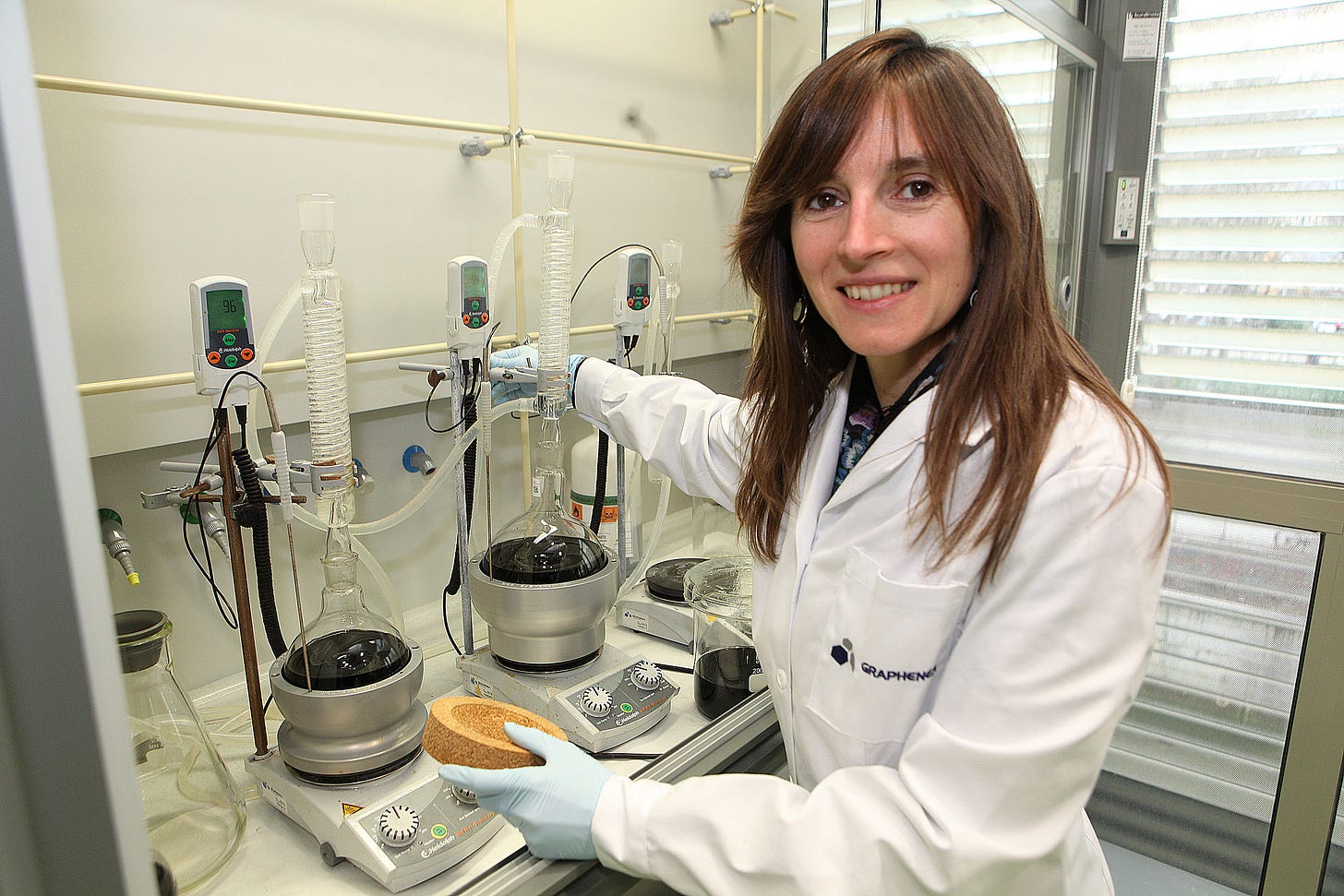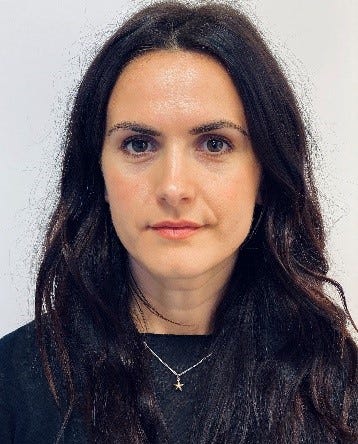Graphene Industrial Forum Online Conference (GIF2021) – Day 1 (Summary)
The GIF2021 Online Conference taked place during the 26-27 January.
I would like to present in this post a summary of the first day and invite my readers to read in 7 days of the summary of the second day.
I hope that will be of interest. Currently, the situation in the world does not allow us to travel to organize events and we have to carry out these events online that so far are being kindly accepted by the scientific community.
The two-day Graphene and 2DM Industrial Forum (GIF) online conference 2021 presented the most recent advances in technology developments and business opportunities in graphene and 2DM commercialization. Key representatives of Companies and key Research Institutes shared their market vision and business opportunities, but also present commercial showcases in all current market fields of graphene products.
This second online edition of the INDUSTRIAL FORUM was focusing on: latest developments in graphene and 2DM production methods towards wide scale commercialization, emerging opportunities for graphene-based materials, determining criteria for graphene and 2DM investment opportunities, revealing the latest updates application and commercialisation of graphene and 2DM based materials in electronics, energy storage, biohealth, composites, sensors, etc.
The speakers of the first day with their titles were:
Daniel Neumaier (AMO / University of Wuppertal, Germany)
Wafer-scale manufacturing of graphene based electronic and sensor devices
Aravind Vijayaraghavan (The University of Manchester, UK)
Graphene Electro-mechanical Bio-sensors
Peter Steeneken (TU Delft, The Netherlands)
Graphene Membranes for Pressure and Gas Sensors
Amaia Zurutuza (Graphenea, Spain)
Graphene in Sensors
Burkay Uzlu (AMO, Germany)
Gate-tunable graphene-based Hall sensors on flexible substrates with increased sensitivity
Aron Cummings (Catalan Institute of Nanoscience and Nanotechnology (ICN2), Spain)
Optimization of Graphene Photothermoelectric Detectors
Gianluca Fiori (Universita´ di Pisa, Italy)
Perspectives and challenges in printable electronics based on two-dimensional materials
Stefano Ippolito (I.S.I.S. - Université de Strasbourg, France)
Harnessing the Charge Transport in Covalently Interconnected TMD Networks
Cedric Huyghebaert (IMEC, Belgium)
Setting up the ecosystem for 2D materials integration with Silicon technology
Pedro Alpuim (INL, Portugal)
Graphene products for micro and macroelectronics
Costas Galiotis (FORTH/ ICE-HT and University of Patras, Greece)
Graphene composites; current status and new perspectives towards commercial applications
Nikolaus Nestle (BASF, Germany)
Black flakes with green value proposition – graphene polymer composites for sustainability
Chul B. Park (University of Toronto, Canada)
Effect of Foaming on the Electrical and Thermal Conductivities of GnP Composites
Mahdi Hamidi (University of Toronto, Canada)
Electromagnetic interference shielding and absorption with 2DM polymer nanocomposites
Gordon Harling (CMC Microsystems, Canada)
Accessing Infrastructure for Prototyping and Measurement
Blerina Gjoka (Abalonyx, Norway)
Modification Graphene Oxide: Opportunities in Industry
Iñigo Torres (Universidad Autónoma de Madrid, Spain)
Nebulization of nanomaterials suspensions for woven non-woven fabrics coating
Gabriele Bianca (Istituto Italiano di Tecnologia, Italy)
Two – Dimensional GaSe and GeSe Nanoflakes for Photoelectrochemical Water Splitting and (PEC)-Type Photodetectors
Marco Piccinni (Istituto Italiano di Tecnologia, Italy)
Solution processed nickel-iron layered double hydroxides for energy storage applications and glucose sensing
Nicola Curreli (Istituto Italiano di Tecnologia, Italy)
Phototransistors from Liquid-Phase Exfoliated Transition Metal Monochalcogenide Flakes
I would like to highlight some of the talks on this first day.
Aravind Vijayaraghavan
Bio: Dr. Vijayaraghavan is a Reader in Nanomaterials in the Department of Materials and the National Graphene Institute at The University of Manchester. He leads the Nanofunctional Materials Group. He is also the Head of Business Engagement (Advanced Manufacturing) for the Faculty of Science & Engineering. His research involves the science and technology of graphene and 2-dimensional materials, particularly for applications in composites, electronics, sensors and biotechnology. He has published over 90 papers in international peer reviewed journals and delivered over 80 presentations at international conferences. He has filed 7 patents. He is the founder of two spin-out companies, Atomic Mechanics Ltd. and Grafine Ltd. He is also a leader in public engagement and science communication has won numerous awards for the same.
Abstract: We present a sensitive and low-cost immunoassay, based on a customized open-source quartz crystal microbalance coupled with graphene bio-interface sensors (G-QCM), to quantify antibodies in undiluted patient serum. We demonstrate its efficacy for a specific antibody against the phospholipase A2 receptor (anti-PLA2R), which is a biomarker in idiopathic membranous nephropathy, a progressive kidney disease. A novel graphene-protein bio-interface was constructed by adsorbing a low concentration of denatured bovine serum albumin (dBSA) on the reduced graphene oxide (rGO) sensor surface. The dBSA film prevents the denaturation of the protein receptor on the rGO surface and serves as the cross-linker for immobilization of the receptor for anti-PLA2R antibodies on surface. The detection limit and selectivity of this G-QCM biosensor was compared with a commercial QCM system. The G-QCM immunoassay exhibited good specificity and high sensitivity toward the target, with an order of magnitude better detection limit (of 100 ng/ml) compared to the commercial system, at a fraction of the cost and with considerable time saving. The results obtained from patient sera compared favourably with those from enzyme-linked immunosorbent assay (ELISA), validating the feasibility of use in clinical applications. The multifunctional dBSA-rGO platform provides a promising bio-functionalization method for universal immunoassay and biosensors. With the advantages of inexpensive, rapid and sensitive detection, the G-QCM sensor and instrument form an effective autoimmune disease screening tool.
Amaia Zurutuza
Bio: She received her Ph.D. degree in polymer chemistry from the University of Strathclyde (Glasgow, UK) in 2002. After two Postdoctoral Research Fellowships working in two European projects related to molecularly imprinted polymers. In 2004, she joined Ferring Pharmaceuticals (previously Controlled Therapeutics) where she worked in the research of new controlled drug delivery systems as a Senior Polymer Scientist. Her contribution led to the granting of three patents in novel biodegradable and biostable polymers for the controlled release of active compounds. In 2010, she became the Scientific Director of Graphenea. At Graphenea, she leads the research and development activities on graphene-based materials. Since joining Graphenea, she has so far filed for ten patents and published in Nature and Science.
Abstract: Graphene being a monolayer of carbon atoms exhibits some remarkable electronic and mechanical properties that make it an ideal candidate to be applied in various types of sensors. The sensors’ market is extremely large since we are dealing with the automotive, electronics and healthcare industries among others. Therefore, it is an excellent starting platform for graphene applications. For example, the current COVID-19 pandemic has demonstrated the urgent need for fast diagnostics in order to minimise and control its effects, here, biosensors based on graphene field effect transistors (GFETs) have shown great potential as a platform for future diagnostics, Figure 1. Since graphene has unique properties such as high carrier mobilities and electrical conductivity, flexibility, biocompatibility, facile chemical functionalisation, and large specific surface area, allowing the immobilisation of high density of bioreceptors, leading to increased sensitivity. During this talk, I will cover the use of graphene in various types of sensors including MEMS [1,2] ion sensors (ISFETs) [3-5], gas sensors [6] and biosensors. Depending on the type of sensor, the graphene requirements including the transfer and characterisation vary considerably
Cedric Huyghebaert
Bio: Cedric Huyghebaert is currently leading the nano-applications and – material engineering (NAME) group at imec dealing with the integration of nano materials as CNT and graphene and graphene related materials in functional applications. He is deputy of the wafer scale integration work package in the Graphene Flagship. He started as a junior researcher in the materials and component analyses group at imec. He studied the oxygen bean interactions during sputtering profiling of semiconductors. He received his PhD in Physics in 2006 at the KULeuven in Belgium. In 2005 he joined imecs pilot line as an integration engineer, especially dealing with the process contamination control. He was part of the packaging group from 2008 to 2010, working as a senior integration engineer dealing with the journey of bringing 3D-stacked IC integration from lab to fab.
Abstract: The continual scaling of Si-based transistors has revolutionized the world through continuous breakthroughs in electronics. The Si scaling roadmap is challenged by short channel effects that limit further gate length scaling. Field-effect transistors (FETs) with semiconducting transition metal dichalcogenides (MX2, such as WS2 or MoS2) as the semiconductor channel promise however to be relatively immune to these short channel effects. FETs with 2D semiconductor channel owe this promise to the ability to make atomically thin channels combined with the theoretical ability to maintain higher carrier mobility – independent of channel thickness. These two properties give the gate voltage a better electrostatic control over the channel. Besides this prospect of continuation of the scaling roadmap, Graphene and related 2D materials offer a heterogeneous platform for enhanced non-computational functionality monolithically integrated with silicon technology [1]. Several years ago, imec started pathfinding work on 300mm integration of both graphene modulators and MS2-FET devices – a key requirement for industrial adoption. This work has resulted in unique 300mm test vehicles for 2D-FETs, allowing the fabrication of functioning devices with gate lengths down to 18nm [2]. These flows are used to study the impact of various processing conditions, such as the channel deposition and transfer process as well as other remaining challenges, including 2D growth quality, formation of the gate dielectric, doping and contact resistance. This talk will give an overview on how we work out solutions in the lab which can be upscaled in the fab towards a 300mm compatible 2D technology which is compatible with the semiconductor standards
Costas Galiotis
Bio: Costas Galiotis is the Principal Investigator (PI) of the ERC Advanced – Tailoring Graphene project. He is a Professor at the Department of Chemical Engineering (Univ. of Patras) and former Director of the Institute of Chemical Engineering Sciences (ICE-HT) which is one of the 7 academic research institutions of the Foundation of Research and Technology-Hellas (FORTH). In its over 26 years of operation FORTH/ ICE-HT has developed into a world-leading centre for the advancement of high quality scientific knowledge in the fields of material science and in the computer aided design and simulation of new materials and processes. It comprises of approximately 150 personnel and has a running yearly budget of 5 M€. Prof. Galiotis is also a member of the Board of Directors of FORTH (since July 2007). FORTH has been ranked as the first Research Centre in the field domain in Greece in 3 successive evaluations. Prof. Galiotis had an auspicious term of office as Director of the Institute in the years 2009-2014. Being also the coordinator of the Hellenic participation and national representative of “Graphene” he contributed in establishing the Graphene Center by joining the research forces of three FORTH institutes, ICE-HT, IESL and ICAM. Despite the Country's intense economic situation he expanded the Institute by literally setting the foundations to the Institute's new modern building that will house research laboratories.
Abstract: Over the last decade, Graphene and Related 2D materials (GRMs) have emerged as ideal inclusions for the development of a whole range of advanced composite materials with enhanced multifunctionality. This is due to the exceptional mechanical, electrical, thermal and impermeable properties of GRMs. In fact, these remarkable properties of GRMs can be imparted to composite material systems in various forms such as fillers, coatings or continuous sheets depending on desired function and cost considerations. Furthermore, GRMs can be integrated in all type of matrices such as metals, ceramics and polymers giving rise to diverse industrial applications in the fields of aerospace, automotive, electronics, renewable energy, biomedical and consumer goods. More specifically, to support wide spread diffusion of GRMs in the plastics industry, low cost, quality controlled and tailor made GRM masterbatches (MBs), i.e. polymeric pellets containing high concentrations of GRMs, have been developed at an industrial scale [1]. Integration of GRMs in FRPs (fibre-reinforced plastics), has enabled the development of mechanically enhanced and/or multi-functional integrated system components in industries such as the aerospace and automotive. Low content GRM fibre reinforced plastics (FRPs) have demonstrated notable enhancements [2] in properties such as damping, fracture toughness, impact damage resistance, etc. Likewise, in elastomeric materials, GRMs can bestow a number of physical enhancements [3] (e.g. chemical resistance, thermal stability etc) that has given rise to a multitude of new applications (e.g. smart seals, wear-resisting tires, thermal interface materials, fire retardant elastomers, etc.). Regarding continuous CVD graphene sheets embedded in polymers, recent work [4] has shown the resulting nanolaminates can outperform conventional laminates in certain aspects of mechanical behaviour and most importantly in EMI shielding effectiveness per unit weight. Furthermore, GRM composites containing inorganic components (e.g. metallic powders, nanoparticles or nanofibers) have a significant impact in the thermal and electrical efficiency of conductors, tribological characteristics (e.g. switches) and environmental protection of coatings, thus, enabling enhancements in the thermo-electrical properties and life-cycle of the components and reductions in assembly time and cost. As manufacturing goes digital and the industry is striving for more sustainable solutions, GRM composites can significantly contribute towards this goal. For example, GRM composites can substitute poor performing materials presently utilized in additive manufacturing processes (e.g. 3D printing), and thus, enable to produce functional products rather than simple replicas. . They can also readily attain sustainability key drivers, such as reductions in weight, energy savings, system integration, longer service life, lower maintenance, assembly costs and others. The future of graphene composites still faces important challenges. Widespread adoption by the industry would inevitably require further developments in the scaling-up of graphene production, especially if graphene were to be used for example as reinforcement – even at low loadings - in construction applications. Finally, standardization of graphene composites is an issue that is not only limited to maintaining the quality of graphene in large quantities, but also improving product identification amongst different suppliers regarding number of layers, oxygen content, densities, lateral sizes, aspect ratios, etc.
Blerina Gjoka
Bio: Dr. Blerina Gjoka, Research Scientist-Project Leader at Abalonyx
Blerina received her Ph.D. in Chemistry at the University of Padova, Italy in 2014 and after a short experience in Milan as a post doc, she moved to Oslo, Norway and worked for three years in Sintef research institute as a researcher. She has 10 years of experience working as a researcher in chemistry field such as composite/catalysts synthesis, functionalization with organic/inorganic molecules and polymer chemistry in three different countries.
She joined Abalonyx in 2018 where she is directly managing Eurostar project developing graphene-based material with improved properties for thermal management and leading research work towards graphene-based products development with Industries and customers worldwide. Currently she is also involved in network building and market opportunities in Gothenburg Sweden
Abstract: Graphene oxide (GO) can be considered as an oxidized single sheet of graphite containing oxygen functionalities on the basal plane and on the edges. Abalonyx produces GO in Kg-quantities using a safe, cost effective and reliable process. Besides having many remarkable chemical and physical properties itself which make it suitable for applications in fields including environment, energy, biomedicine, graphene oxide also serves as a convenient intermediate for large scale production of graphene-like materials such as reduced graphene oxide (rGO). [1][2] To improve the electrical and thermal conductivity of rGO, both chemical and thermal reductions have been performed in this work. Thermal reduction of graphene oxide has shown superior results in terms of the degree of reduction (C/O ratio) compared to chemical methods. However, the restoration of the honeycomb lattice, necessary to increase the electrical conductivity of the reduced material, still remains a challenge. For each method applied, the scalability of the process was explored and optimized together with the chemical and physical properties of the modified material. Additionally, to expand the possibilities of graphene oxide-like materials and show versatility in terms of chemical modification, covalent functionalization with amine groups was performed. Such amine-based GO materials have found use in many fields such as composites, catalysis, electronics and water treatment. [3][4] These chemical modifications were implemented not only to enhance and modulate the properties of graphene oxide, but also to provide scalable and reproducible functionalized graphene oxide materials, in view of large-scale production. Additionally, modifications will provide better dispersion in different organic solvents and as example in Figure 1 is reported a general procedure to obtain reduced and functionalized graphene oxide material. Analytic techniques, such as FT-IR, XRD, XPS; FT-Raman and TGA, were combined to better characterize the graphene oxide modified derivatives.
The summary of the second day will be published soon
Regards and take care.









